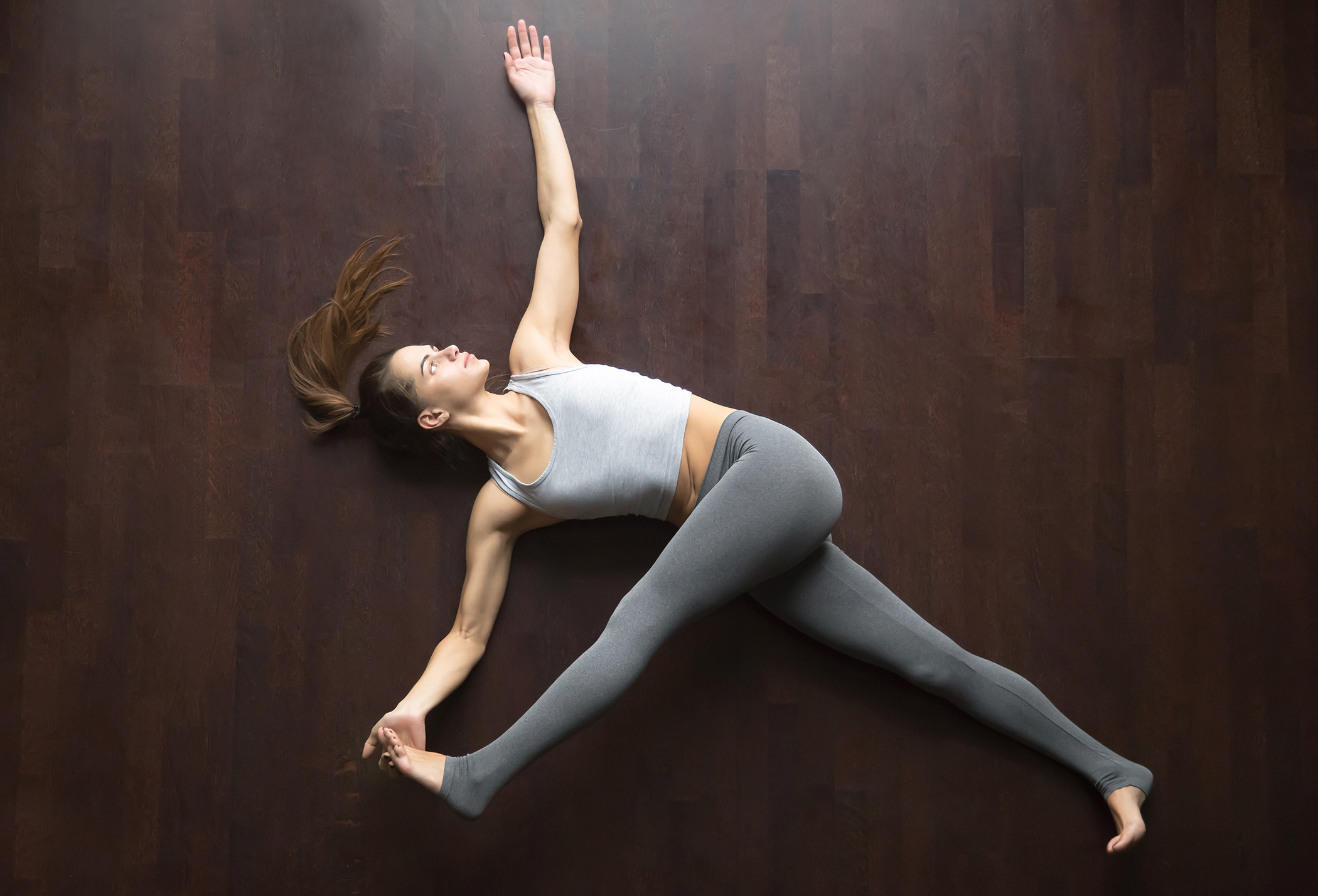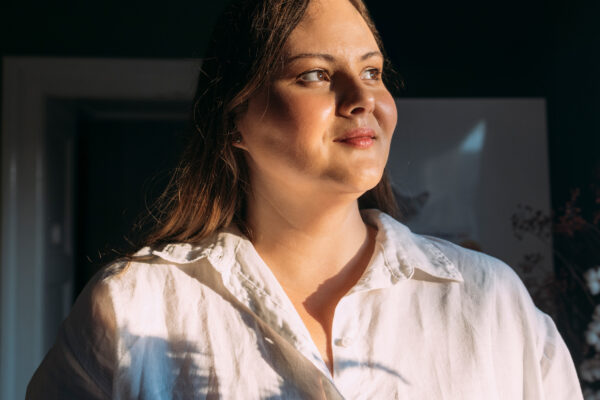How Simple Stretches and Movement Can End Chronic Tightness and Pain
By: Jamie Bussin and Lisa Greenbaum
Who hasn’t complained of tight and sore hips? For those who are active, repetitive squats, running and cycling have us continually flexing our hips over and over. Ironically, it’s the very same for anyone who sits for long periods of time. The difference is the long-held flexion vs. the opening and closing of the hip joint. In the end they both lead to the same feeling of tightness and when experienced for long enough, tight lower backs or even achy knees as well.
Local Yogi, Lisa Greenbaum wrote about this in the magazine, and came on the Talk Show/Podcast to discuss what to do about this common problem. This is a digest of that article and conversation.
Stretching: When I spin, my hips get very tight. In order to release the hip I do a figure 4 stretch. You can do this stretch either standing or lying on your back. The following describes the lying version. Lie on your back with your knees bent and your feet flat on the floor. Lift your right leg and place your ankle on the lower left thigh (just above the knee). Reach your hands to grasp your lower shin (your right hand will go through the hole you’ve made with your right leg). Gently pull your left shin inwards towards you, while using your right forearm to push your right thigh away from you, and hold for 30 seconds. You should feel your muscle loosen on the outside of your right hip. Now do the same for your left leg (same steps alternate leg).
Lisa recommends lunges which stretch out the hip flexor at the front of the hip. Place one leg forward, ankle positioned under the knee with your foot flat. Your back leg is extended behind with either your leg straight or knee bent on the floor. (you may want to add cushioning) Before sinking into the lunge, be sure you squeeze into your buttocks. This will keep your pelvis neutral and also encourage the opening through the front of the hip. You can move in and out of the stretch gently, and when holding the stretch, effort should be closer to 50-60% as pushing into the stretch too forcefully can cause more harm than good.
Walking: If you have a desk job, make sure you are taking a long walk at some point in the day to offset your seated posture. Lisa recommends setting an alarm so that you get up from your seated position every 30 minutes. You might consider purchasing a standing desk. Walking for even 5 minutes after a heavy workout or even after a yoga class involving lots of hip openers can help encourage good healthy blood flow.
When we walk we use the hip in a different way and actually encourage the extension of the hip joint vs. the flexion we experience by cycling or sitting. Says Lisa, “When you walk, check in with your glutes. Try to alternately squeeze your buttocks. It will probably feel (and look) a bit funny but will give you a pretty good indication of how tight your hips are and how you compensate in either walking or running.”
There’s a law in body movement that when you flex one muscle, the opposite muscle stretches. When you flex into your glute muscles, your hip flexor by nature has to open, and so if your hip flexors are tight, when you start to squeeze your glute muscle and this could be walking or in the lunge- you’re opening your front.
Rest: Constructive rest position has you lying on your back with your knees bent and feet flat on the floor. Walk your feet slightly forward so that your knees are at about a 45-degree angle and then stay here for 10 minutes. At first it may feel a bit strange, like your weight is more on one side or the other, or maybe a lack of grounding through the feet. However, with time you will begin to feel your pelvis come back into a neutral space and your weight will feel more even. Lisa says, “This pose is very therapeutic; the hardest part about it is being still.”




